Italian breadsticks, or grissini, trace their origin to the region of Piedmont, or more specifically, its capital of Turin. They got their name, according to one legend, way back in the 1300s, when loaves of bread were called grissia in the local dialect. During a time of inflation, bakers began to shrink the size of their loaves rather than raise their prices, but the loaves got to be so small that people began using the diminutive term grissino for the tiny loaves.
Whether this type of bread remained popular or fell away after that, it seems to have made a comeback about 300 years later, when Vittorio Amedeo II became Duke of Savoy at the age of nine after his father died. It was 1675, and young Vittorio suffered from ill health, so the court physician commissioned a baker from Turin, Antonio Brunero, to create something easily digestible for the boy. Brunero created crispy breadsticks by taking the dough used to make ghersa, a typical bread of Turin, and stretching it out into long, thin strips before baking them. Lo and behold, the young duke’s health improved, and he went on to become king of the region in 1713. The popularity of grissini spread throughout Italy and even as far away as France, where Napoleon, in the early 1800s, established a stagecoach courier service between Turin and Paris to provide him with a regular supply of what he dubbed “les petits bâtons de Turin” (the small sticks of Turin).

And that, for want of a better introduction, is what this week’s challenge is about. Paul and Mary insisted on 36 breadsticks, 10 inches long. They wanted them to be consistent in color with a definite snap when broken. For this to occur, Paul said, they would need a short proof and a long, slow bake.
For my grissini, I chose a basic recipe and added my own touch by using a homemade “everything bagel” seasoning mix to flavor the breadsticks. The seasoning mix recipe came from TwoPeasAndTheirPod.com. The only change I made was to use coarse sea salt instead of flaked (because that’s what I had on hand). In the future, I would definitely use flaked, or reduce the amount of salt altogether, as the end result tasted more like a pretzel due to its saltiness.
I followed the grissini recipe fairly closely, although I substituted honey for the sugar. With only 2 teaspoons of sugar, I didn’t think making that one-to-one substitution would affect the outcome of the recipe at all. I also chose to knead the dough by hand rather than in the mixer. I prefer to do it that way because it’s easier to tell when the dough is smooth and elastic and ready for proving.
I liked the technique this recipe uses to form the breadsticks. By rolling and cutting them into thin strips, rather than forming each from a small ball of dough, you end up with more uniform pieces. Before cutting the strips, you sprinkle on the seasoning and press it into the dough with the rolling pin. After cutting, each strip is twisted before proving again, creating a long, thin spiral of seeds around each breadstick.
Despite this technique, my grissini didn’t all turn out the same. Some were long and skinny, some turned out short and fat, but the recipe made way more than 36, so I was able to pick and choose the ones that looked most alike. I kept the fatter ones in the oven longer, to assure their crispiness, so most of mine had a satisfying snap when broken. Except for the saltiness factor, I think Paul and Mary would have been pleased.
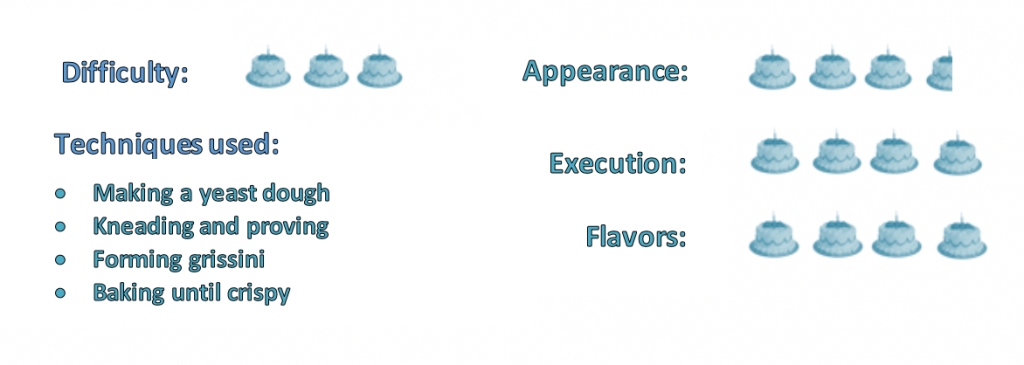
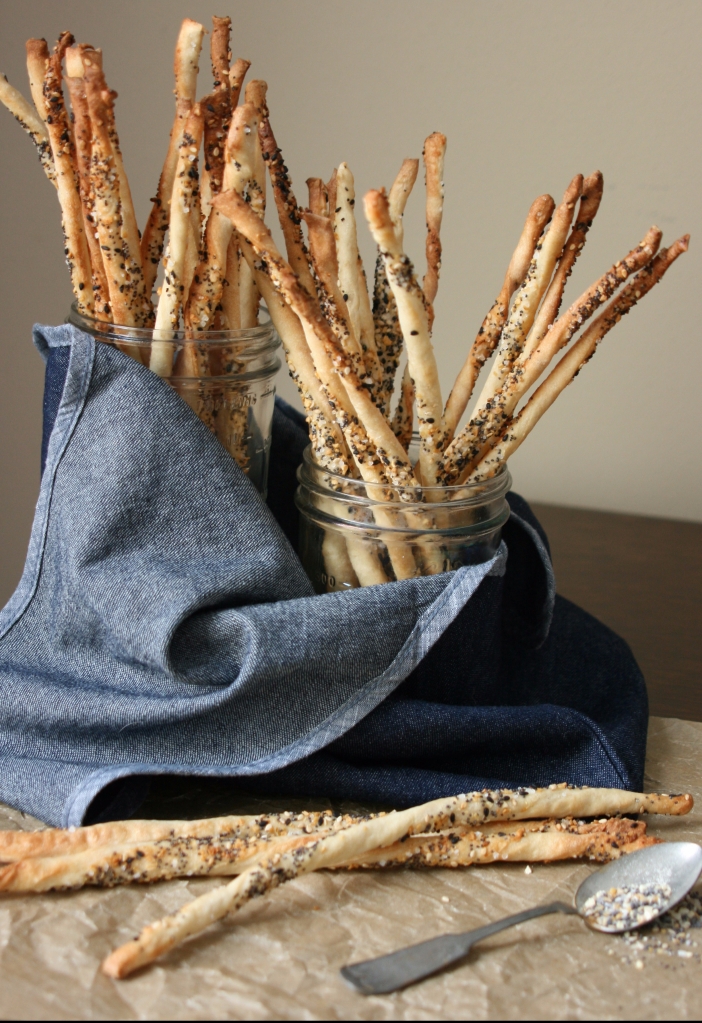
‘Everything Bagel’ Grissini
Seasoning recipe credit: TwoPeasAndTheirPod.com
For the Everything Bagel seasoning:
- 2 T. poppy seeds
- 1 T. white sesame seeds
- 1 T. black sesame seeds
- 1 T. + 1 t. dried minced garlic
- 1 T. + 1 t. dried minced onion
- 2 t. flaked sea salt (or less, if want it less salty)
For the breadsticks:
- 3 c. all-purpose flour
- 2 t. instant yeast
- 2 t. honey
- 1¼ t. salt
- 1 T. nonfat dry milk
- 2 T. olive oil
- 3/4 c. + 2 T. lukewarm water
- 1 egg white
- 1 T. cold water
- 1/3 c. Everything Bagel seasoning mix
Directions
- Combine all the ingredients for the seasoning mix in a small bowl. Stir until well combined.
- In the large bowl of a stand mixer, combine flour, yeast, honey, salt, nonfat dry milk, olive oil and lukewarm water. Mix with the paddle attachment until well combined. Then switch to the dough hook or knead by hand until it’s soft and smooth. (It will be sticky at first, but will become easier to work with as you knead it.
- Divide the dough in half, and place each half in a lightly greased bowl or measuring cup. (The measuring cup allows you to see when it’s doubled in size.) Cover with lightly greased plastic wrap or a clean towel, and let it rest and relax for 15 minutes to an hour. It should just about double in size.
- Working with half the dough at a time, pat or roll it into a 10-by-12-inch rectangle. Lightly whip the egg white and cold water in a small bowl, then brush the dough lightly with the egg white and water, saving some for the second half of the dough. Sprinkle the dough with half of the seasoning mix. Use a rolling pin to lightly press the seeds into the dough.
- Use a pizza wheel or sharp knife to cut the dough (the short way) into strips about 3/8-inch wide. Grasp one end of a strip in each hand and twist to form a long, thin spiral; then place it on a lightly greased or parchment-lined baking sheet. Repeat for all strips, and then roll out and cut the other half of the dough in the same manner.
- Cover the breadsticks, and let them rest and rise for 30 to 60 minutes, until they’ve puffed up noticeably. Toward the end of the rising time, preheat the oven to 425°F. Bake the breadsticks for 12 to 14 minutes or until they’re golden brown. Remove from the oven, and transfer them to a rack to cool.
Next week: English muffins



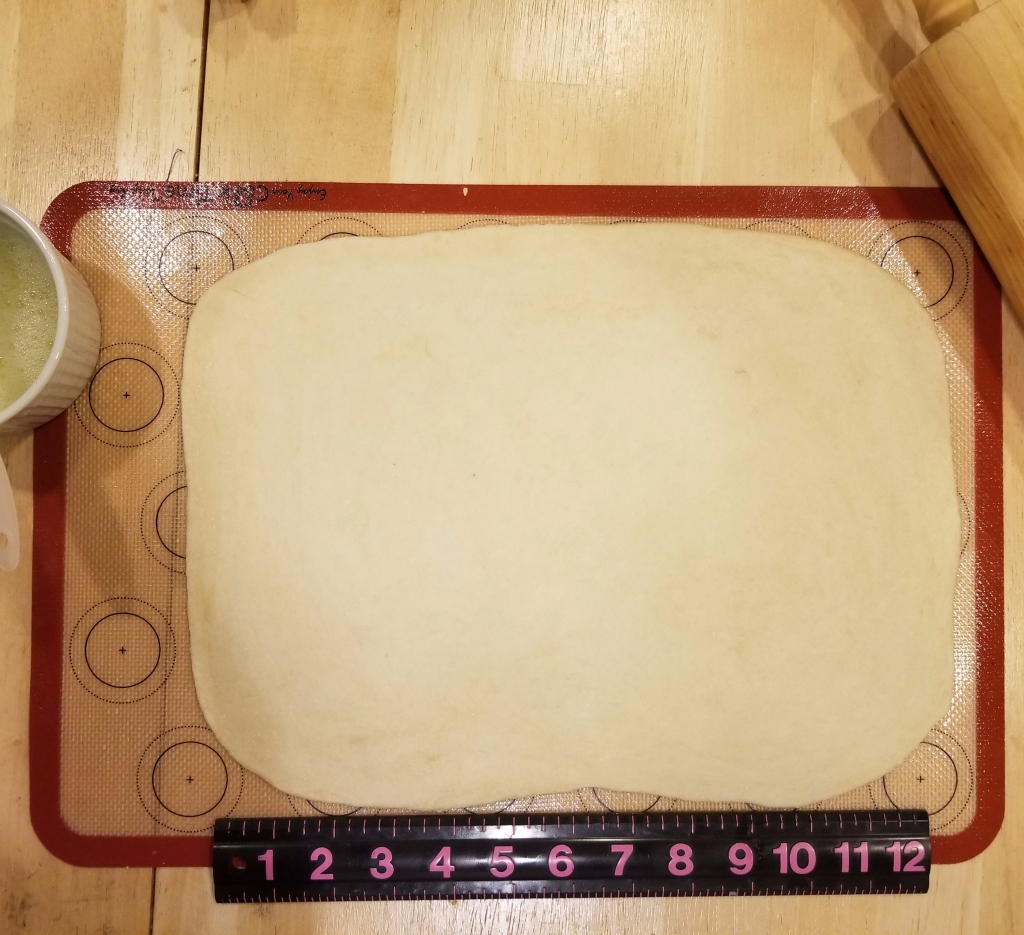

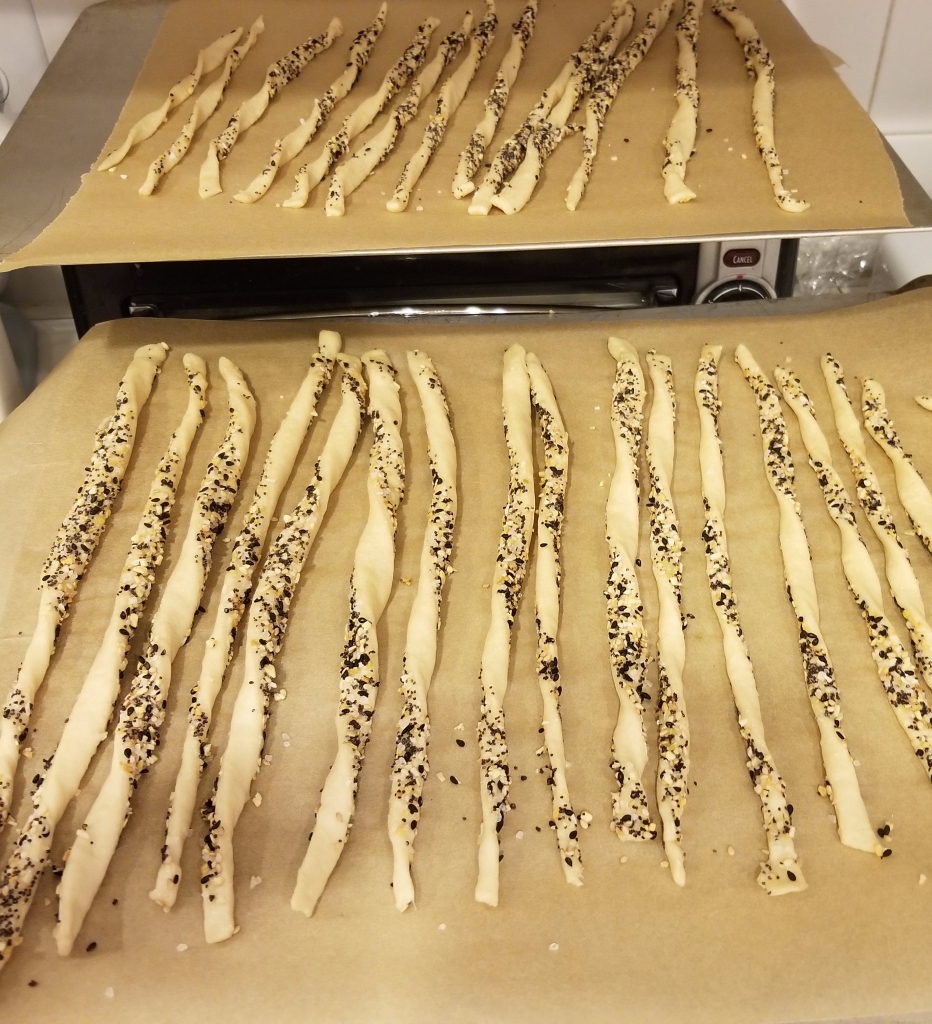
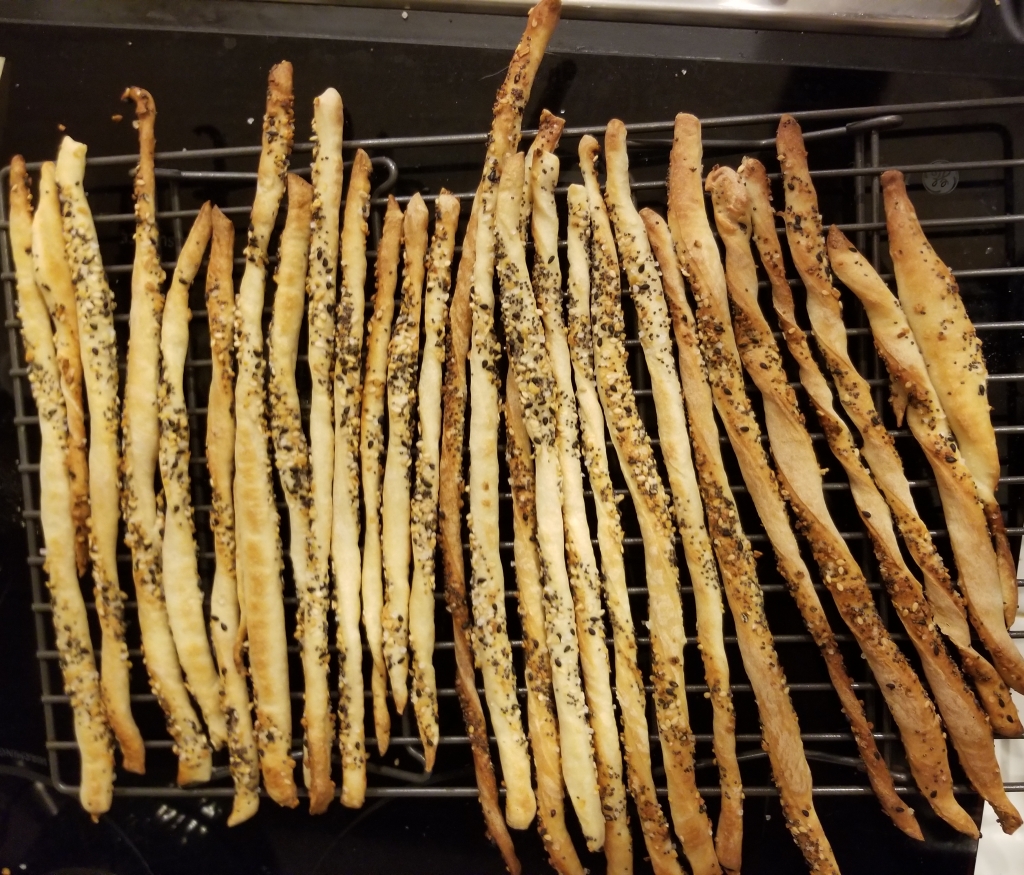

1 thought on “Breadsticks”